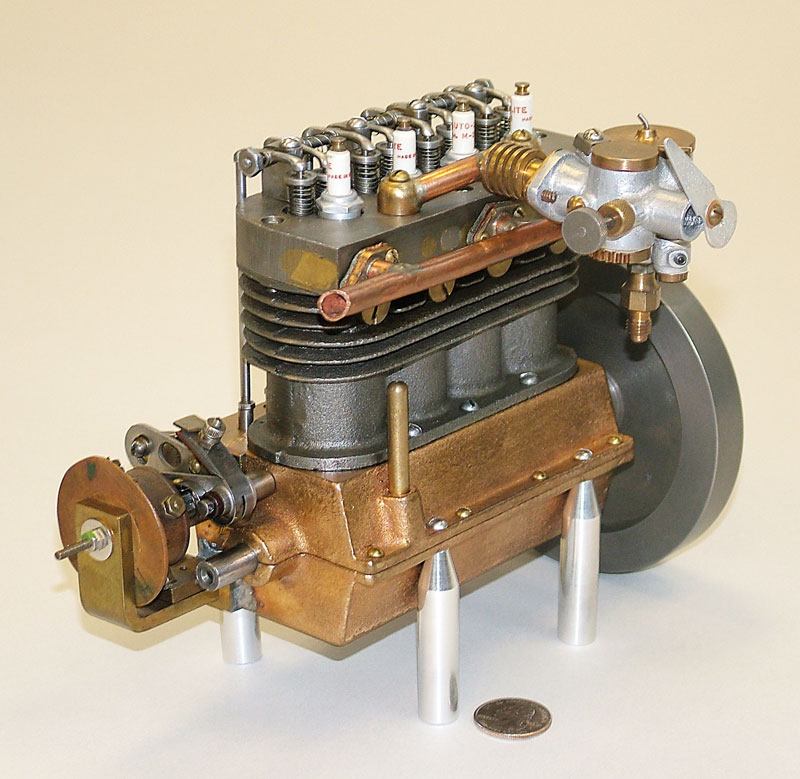In 1927, an instructor (Mr. Gay) and his class at the Naval Machinist School in San Diego, CA produced this 4-cycle, air-cooled, overhead-valve engine from aluminum castings, bronze and iron. The crankcase is cast in bronze, making the engine somewhat heavy, but eliminating the need to fabricate and insert crankshaft bearings. The crankcase is the oil reservoir for lubricating the internal parts. The crankshaft slings the oil as it spins. The external overhead rocker assembly is manually lubricated before running the engine.
The spark plugs were originally located on the side of the cylinder block, common for lower-compression engines. Perhaps to improve starting the engine or to improve its performance the plugs were relocated to the top of the head. An aluminum extension (slug) was bolted to the top of each piston to increase compression. The original spark-plug holes were then filled with brass plugs. The engine is 10”-long, 7”-wide, 8”-high, and weighs 12 lbs., 4 oz.

